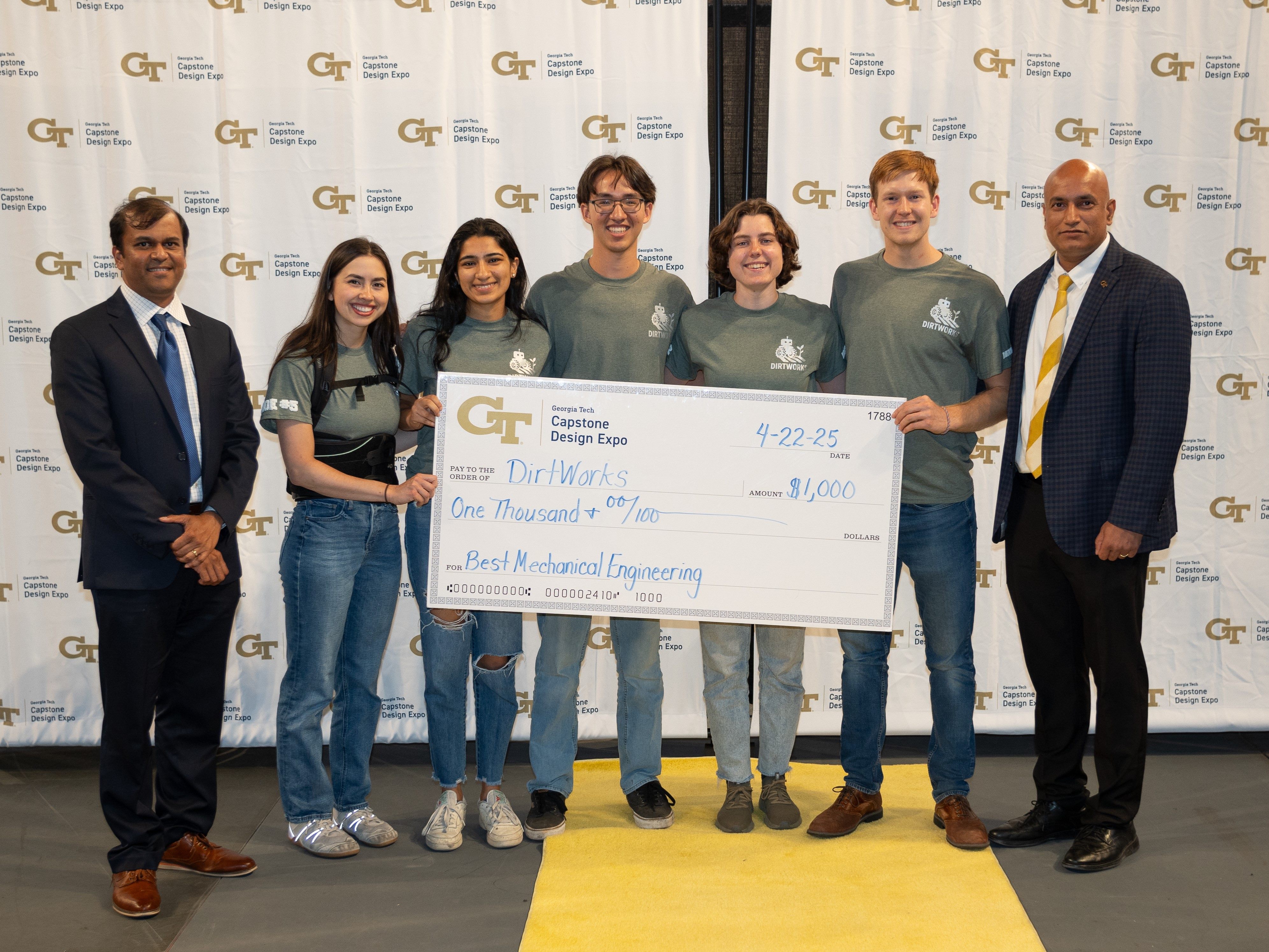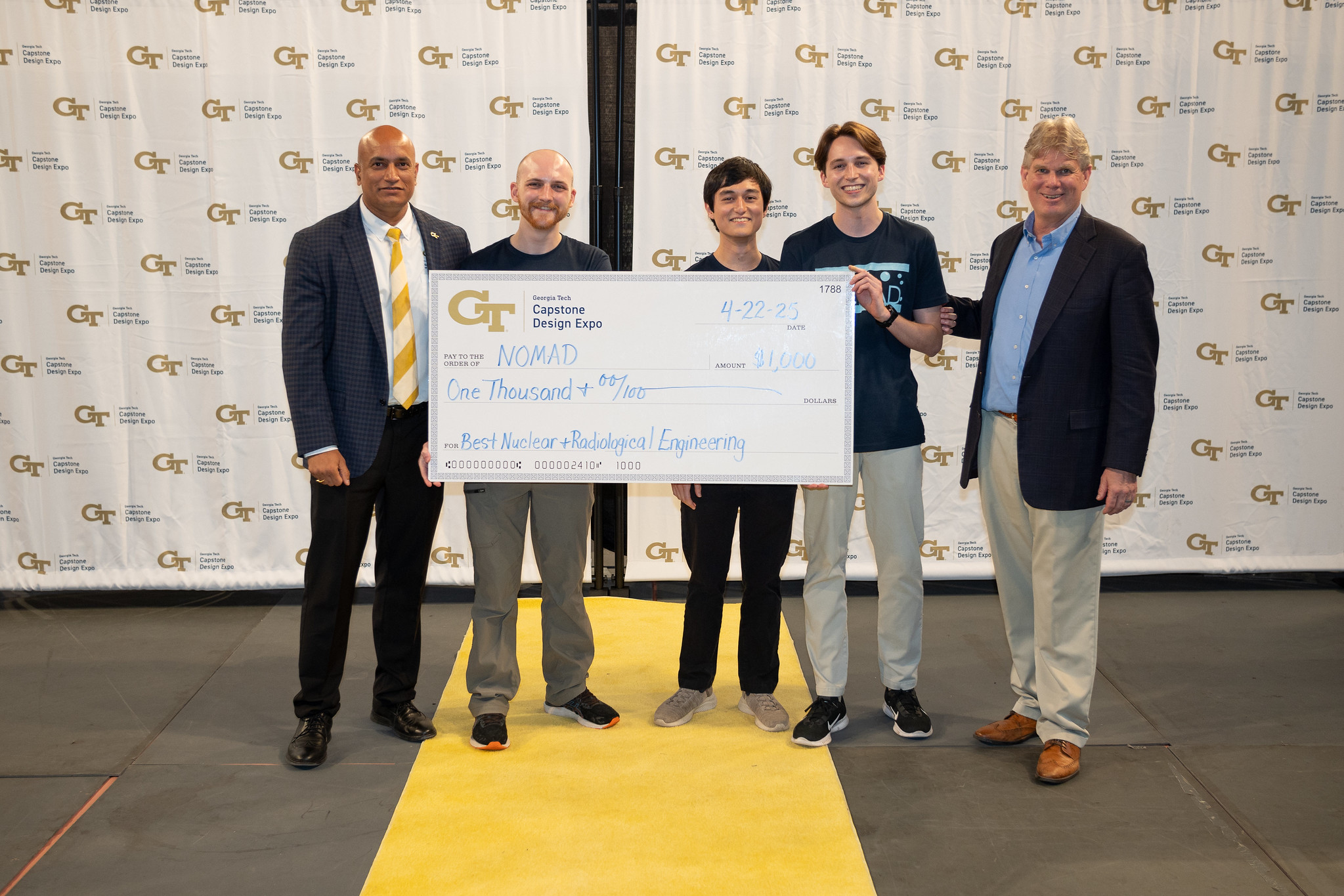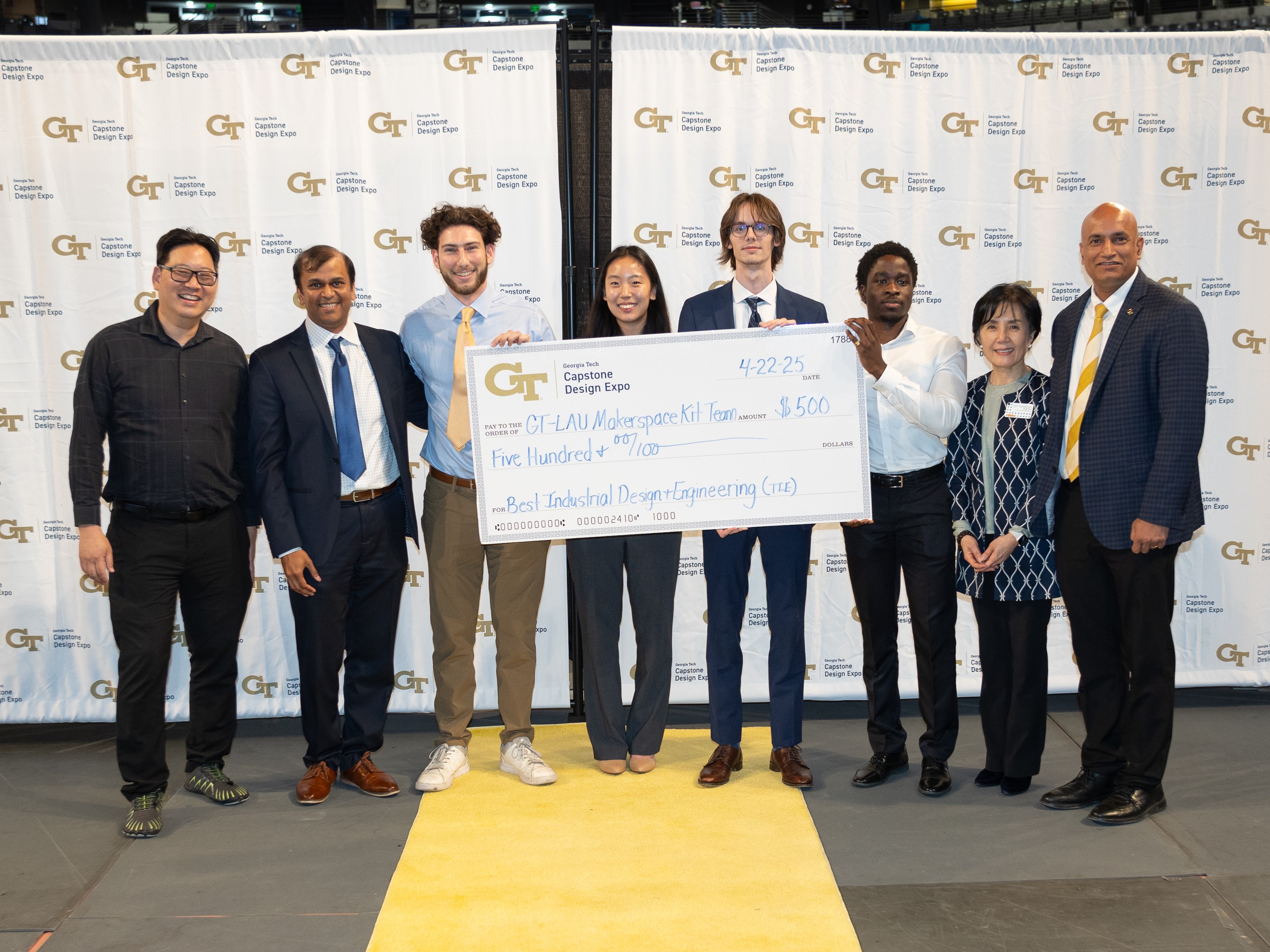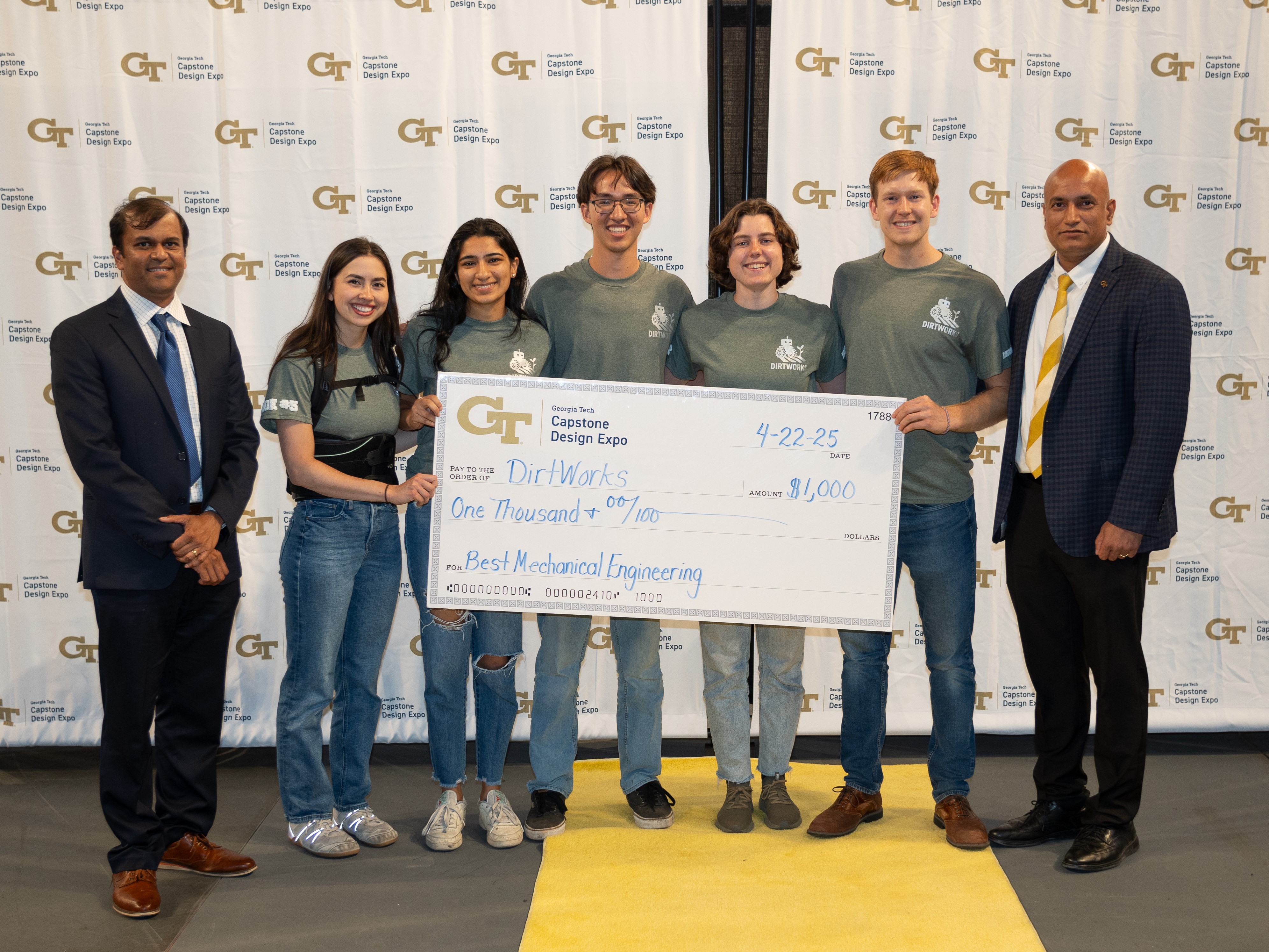
Woodruff School Innovation and Collaboration on Display at Capstone Design Expo
April 23, 2025
By Chloe Arrington
The innovation and ingenuity that only Yellow Jackets can produce was on full display at the Spring 2025 Capstone Design Expo. The proof was in the numbers, with a record 238 teams and over 1,300 students from 12 schools across four colleges participating in this semester's expo. Projects showcased a variety of creativity and inventiveness, seeking to provide solutions for real-world problems in industry, developing communities, and those with real commercialization potential.
The George W. Woodruff School of Mechanical Engineering was represented by 69 teams and saw success in several categories.
Team DirtWorks, comprised of Woodruff School students Luke Barnes, Stephen Britten, Katherine Ciavola, Bryn Shannon, and Priya Soneji, won the best mechanical engineering project.
The team developed the RowRider, an autonomous weeding solution for small organic vegetable farmers. The project aimed to decrease the man-hours required for weed control. Throughout the semester, the team visited multiple farm sites for product testing and received positive feedback for their innovative design.
Several students from team DirtWorks serve as prototyping instructors in the student makerspace, the Flowers Invention Studio.
NOMAD was the winning nuclear and radiological engineering team. Students Malachi West, Noah Woodyard, and Garrett Youngblood designed and built a process to create 1-dimensional acoustic detectors that can detect epithermal and fast neutrons, and protons, which could be utilized for cancer treatment.
Mechanical engineering student Emily Winters was a member of the best interdisciplinary project-winning team, Space Wheels, along with students Fahd Aly (CmpE), Taylor Frankum (EE), Susannah Gordon (EE), James Shin (EE), and Daniel Vail (EE).
The team created an inexpensive design for a CubeSat orientation system called a reaction wheel. The device is specifically intended for small satellites called CubeSats, which have become a popular tool for quickly advancing space technology. Georgia Tech has launched a number of the briefcase-sized spacecraft, and they often use common components to keep costs down.
Winters is heavily involved in the Student Competition Center (SCC), where she is the advanced development lead for GT Motorsports.
Team GT-LAU Makerspace Kit Team, which included mechanical engineering students Yeji Han, Alexander Hom, and Dingmohen Li, tied for first place for the best industrial design and engineering project. The group designed a makerspace kit for Lebanese schoolchildren ages 9-12.
These kits provide Lebanese private school students who don't have access to dedicated creative arts programs a fun and accessible way to explore their imagination. The project is in collaboration with Lebanese American University and local schools in Lebanon as part of the Woodruff School's Design for Hope initiative—supported through TechMade.
This initiative is a bold step toward co-developing novel engineering solutions that serve the global good. Through this initiative, the school is expanding partnerships with higher education institutions locally and globally to bring hands-on innovation and opportunity directly to underserved communities.
As part of this effort, the GT-LAU team piloted this powerful collaboration and together, they developed tools and activities to foster creativity in middle school classrooms, demonstrating how cross-cultural design can inspire the next generation of problem-solvers.
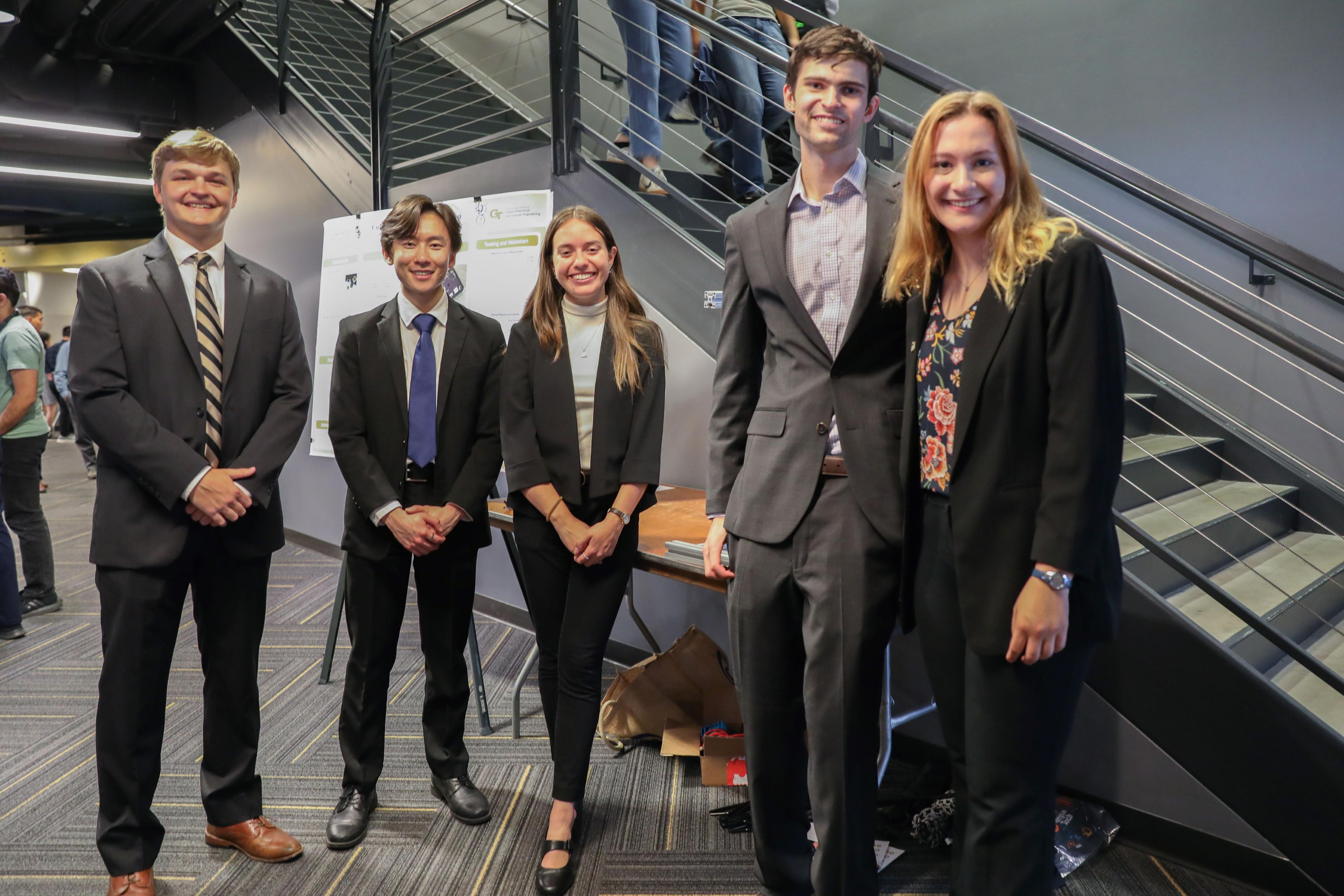
Interdisciplinary team winner, Space Wheels
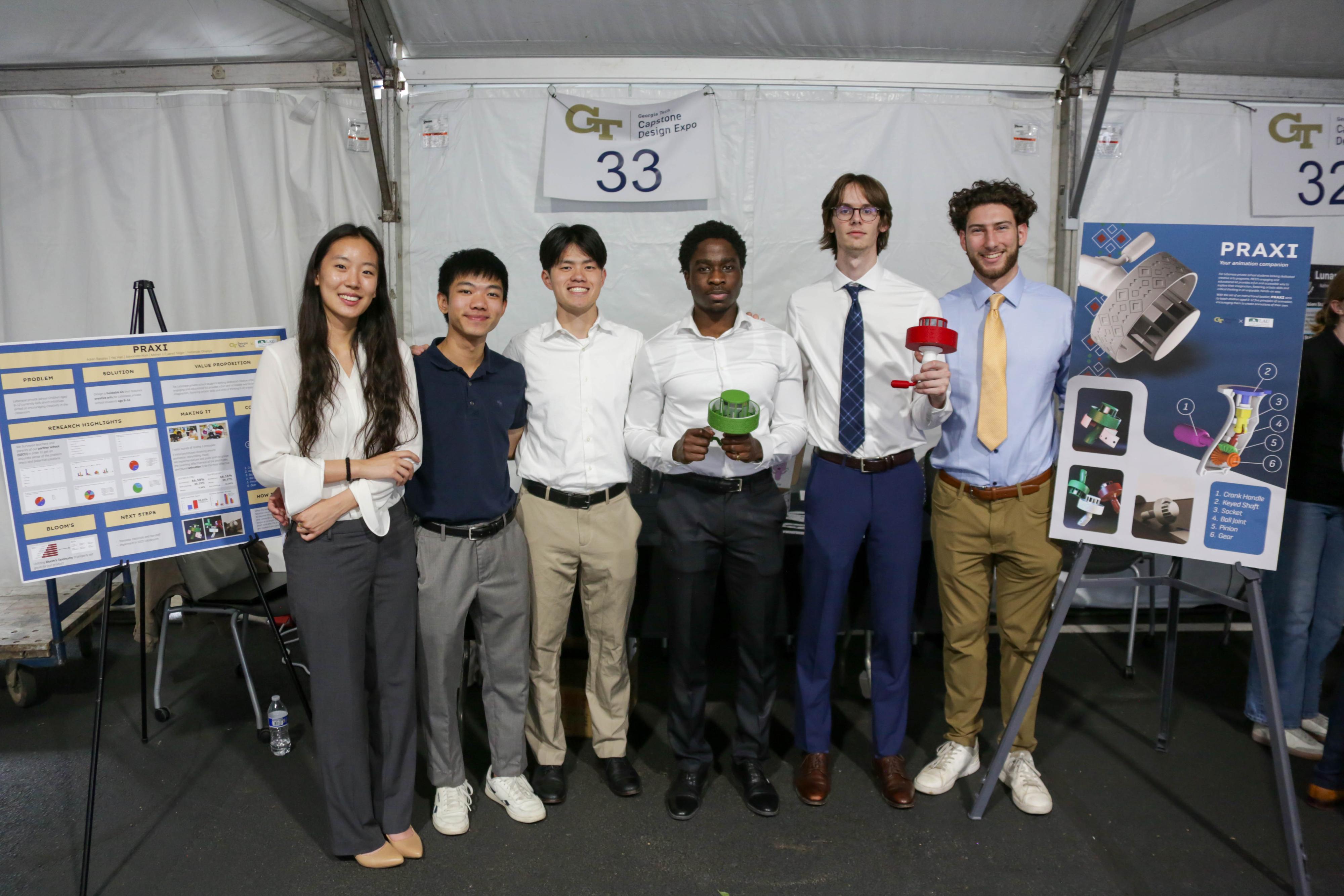
Industrial Design and Engineering team, GT-LAU Makerspace Kit Team
Along with the overall wins, several mechanical engineering students received honorable mentions for their team's projects. This year, every team that received an honorable mention included students from the Woodruff School.
Honorable mentions went to mechanical engineering team, Team Capy, and interdisciplinary teams, AutoStitch, BECMJackets, and Energy Analysis Team.
Almost 60% of the teams at the spring Expo worked on projects for industry sponsors. The Capstone Design program also is supported by philanthropic donations that are part of Transforming Tomorrow: The Campaign for Georgia Tech, a more than $2 billion comprehensive campaign designed to secure resources that will advance the Institute and its impact — on people’s lives, on the way we work together to create innovative solutions, and on our world — for decades to come.
See Woodruff School winners from the Capstone Design Expo below and click here to view a photo gallery from the event.
Companies, entrepreneurs, and organizations interested in sponsoring projects in the Capstone Design class can contact Director of Design & Innovation Amit Jariwala. For more information on what projects are a good fit for the course, please review this brief YouTube video.
Some content taken from the news article, Solutions for the Operating Room and CubeSat Navigation Top Spring 2025 Capstone Design Expo, written by the College of Engineering.

